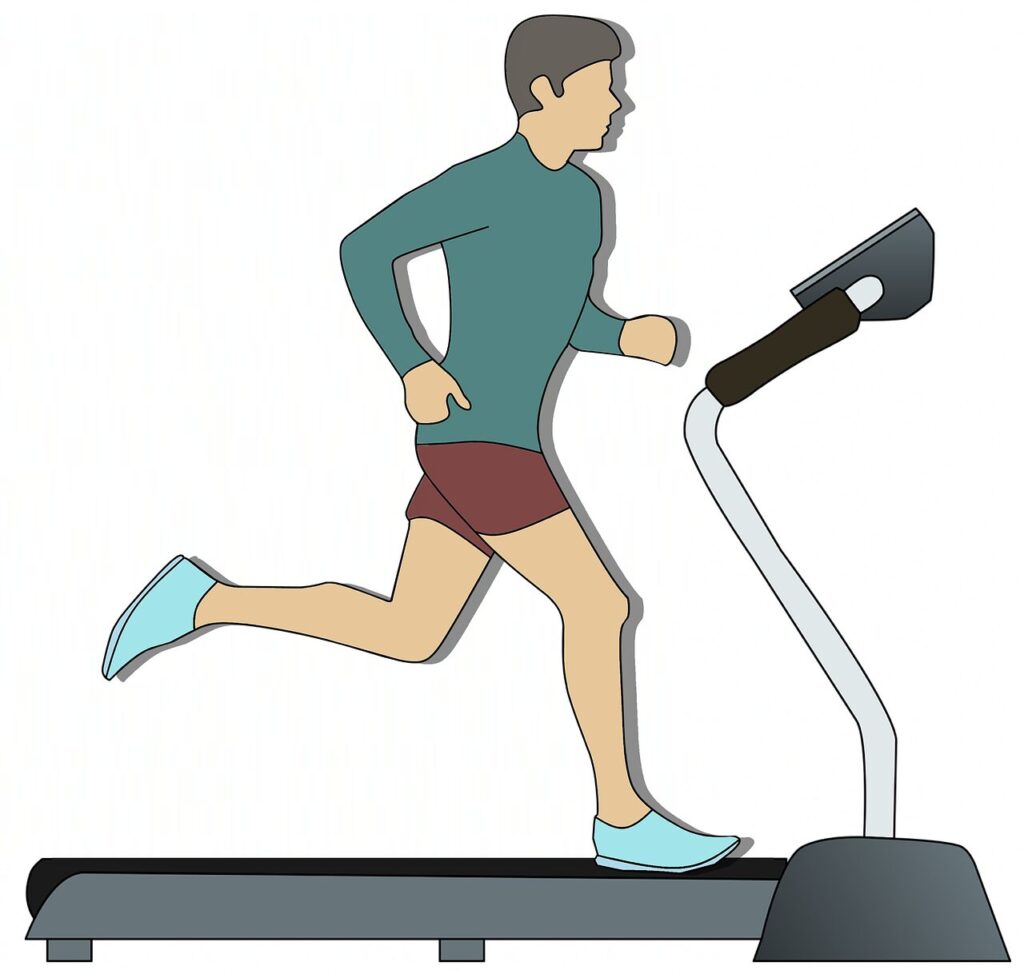Benefits of Cardio Interval Training: Unlock Your Fitness Potential
Contents
- 1 Benefits of Cardio Interval Training: Unlock Your Fitness Potential
- 1.1 Introduction
- 1.2 What is Cardio Interval Training?
- 1.3 Key Benefits of Cardio Interval Training
- 1.3.1 1. Improves Cardiovascular Health
- 1.3.2 2. Burns More Calories in Less Time
- 1.3.3 3. Enhances Metabolism
- 1.3.4 4. Increases Endurance and Stamina
- 1.3.5 5. Improves Insulin Sensitivity
- 1.3.6 6. Builds Muscle and Strength
- 1.3.7 7. Customizable for All Fitness Levels
- 1.3.8 8. Time Efficiency
- 1.3.9 9. Boosts Mental Health
- 1.3.10 10. Improves Sports Performance
- 1.4 read more posts
- 1.5 Types of Cardio Interval Training
- 1.6 Safety Tips for Cardio Interval Training
- 1.7 read more posts
- 1.8 Sample Cardio Interval Workout
- 1.9 Conclusion
- 1.10 read more posts
- 1.11 FAQs
- 1.12 read more posts
Read DISCLAIMER
Cardio interval training is a game-changer for fitness. Discover its benefits, from improved heart health to efficient calorie burning, and learn why it’s ideal for people of all fitness levels.
Introduction
Cardio interval training, also known as high-intensity interval training (HIIT), is a workout approach that alternates between intense bursts of exercise and short recovery periods. This method not only makes workouts more engaging but also delivers a host of health and fitness benefits. Whether you’re a beginner looking to improve your stamina or an athlete aiming to optimize performance, cardio interval training can help you achieve your goals.
What is Cardio Interval Training?
Cardio interval training involves cycles of high-intensity exercise followed by low-intensity recovery or rest periods. A typical session can range from 10 to 30 minutes, making it an efficient workout option for busy individuals.
For example:
• High-Intensity Phase: Sprinting for 30 seconds.
• Low-Intensity Phase: Walking or light jogging for 1 minute.
This pattern is repeated multiple times, depending on fitness levels and goals.

Key Benefits of Cardio Interval Training
1. Improves Cardiovascular Health
• Interval training challenges the heart and lungs, increasing cardiovascular endurance.
• It strengthens the heart muscles, lowers resting heart rate, and improves oxygen uptake.
2. Burns More Calories in Less Time
• The intensity of interval training significantly increases calorie expenditure during the workout.
• Post-exercise oxygen consumption (EPOC) continues to burn calories for hours after the session.
3. Enhances Metabolism
• Interval training boosts metabolism, promoting fat burning and weight loss.
• It helps preserve lean muscle mass while reducing body fat.
4. Increases Endurance and Stamina
• Alternating between high and low-intensity intervals trains the body to recover faster and perform longer at higher intensities.
5. Improves Insulin Sensitivity
• Regular interval training enhances the body’s ability to use insulin effectively, reducing the risk of type 2 diabetes.
6. Builds Muscle and Strength
• High-intensity intervals often include movements that engage multiple muscle groups, promoting strength and muscle tone.
7. Customizable for All Fitness Levels
• Workouts can be tailored to match your fitness level, with adjustments to intensity, duration, and recovery periods.
8. Time Efficiency
• With sessions as short as 15–20 minutes, cardio interval training is perfect for those with a busy schedule who want effective results.
9. Boosts Mental Health
• Interval training releases endorphins, reducing stress and improving mood.
• The challenge of intervals builds mental resilience and focus.
10. Improves Sports Performance
• Athletes use interval training to mimic the demands of their sport, improving speed, agility, and explosive power.
read more posts
Types of Cardio Interval Training
1. Sprint Intervals
Ideal for runners, alternating sprints with walking or jogging.
2. Cycling Intervals
Alternating between high-resistance pedaling and light cycling on a stationary bike.
3. Tabata Training
Short bursts of maximum effort (20 seconds) followed by 10 seconds of rest, repeated for 4 minutes.
4. Bodyweight Circuit
Alternating between bodyweight exercises like burpees, jumping jacks, and squats with recovery periods.
5. Rowing Intervals
Alternating between powerful rowing strokes and slower, steady-paced rowing.
Safety Tips for Cardio Interval Training
1. Warm Up and Cool Down
Prepare your muscles and prevent injury with a 5-10 minute warm-up and cool-down.
2. Start Slow
Beginners should start with moderate intervals and gradually increase intensity and duration.
3. Listen to Your Body
Avoid overtraining and allow adequate recovery to prevent burnout or injury.
4. Stay Hydrated
Drink water before, during, and after your workout to maintain hydration.
5. Use Proper Form
Focus on correct technique to maximize benefits and minimize the risk of injury.
read more posts
Sample Cardio Interval Workout
• Warm-Up: 5 minutes of light jogging or dynamic stretching.
• Round 1: 30 seconds of sprinting + 1-minute walking (repeat 5 times).
• Round 2: 20 seconds of burpees + 40 seconds of rest (repeat 5 times).
• Cool-Down: 5 minutes of light stretching.
Conclusion
Cardio interval training is an efficient, effective, and versatile workout that offers numerous benefits for physical and mental health. Whether your goal is to lose weight, build endurance, or boost overall fitness, this method can help you achieve results in less time. By incorporating interval training into your routine, you’ll not only improve your athletic performance but also enjoy a healthier and more active lifestyle.
read more posts
FAQs
1. How often should I do cardio interval training?
For beginners, 2–3 sessions per week is ideal. Advanced athletes can increase to 4–5 sessions weekly.
2. Is cardio interval training safe for everyone?
Most people can benefit from interval training, but individuals with medical conditions should consult a doctor first.
3. Can interval training help me lose weight?
Yes, it’s highly effective for weight loss due to its calorie-burning and metabolism-boosting effects.
4. What’s the difference between HIIT and cardio interval training?
HIIT is a form of cardio interval training with maximum intensity bursts, while cardio intervals can be moderate or high-intensity.
5. Do I need equipment for interval training?
No, many interval exercises, like bodyweight workouts, require no equipment.

Can you be more specific about the content of your article? After reading it, I still have some doubts. Hope you can help me.
Hey, I think your website might be having browser compatibility issues. When I look at your blog in Chrome, it looks fine but when opening in Internet Explorer, it has some overlapping. I just wanted to give you a quick heads up! Other then that, excellent blog!
I would like to thank you for the efforts you have put in writing this site. I am hoping the same high-grade web site post from you in the upcoming as well. Actually your creative writing abilities has encouraged me to get my own website now. Actually the blogging is spreading its wings quickly. Your write up is a great example of it.
Hello there! I could have sworn I’ve been to this website before but after reading through some of the post I realized it’s new to me. Anyways, I’m definitely glad I found it and I’ll be book-marking and checking back frequently!
I don’t think the title of your article matches the content lol. Just kidding, mainly because I had some doubts after reading the article.
Your article helped me a lot, is there any more related content? Thanks!
This is a topic that’s near to my heart… Many thanks! http://www.kayswell.com Where are your contact details though?
Your point of view caught my eye and was very interesting. Thanks. I have a question for you.
Your article helped me a lot, is there any more related content? Thanks!